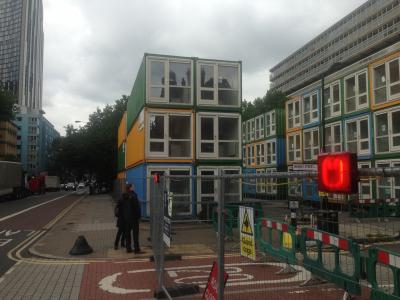Shipping containers are generally active in the world of intermodal transportation and logistics. Cargo containers allow for our daily goods to be imported and exported to different areas of the world with a great deal of effeciency, providing both financial and energy savings. If not for these containers you probably would not have gotten many of the products that you've come to rely on in your daily life. However, due to environmental developments and eco/green housing initiatives, many of these used shipping containers are getting a second lease on life.
The most common place we expect to see shipping containers is stacked up near industrial areas, shipping docks, and container depots. The containers have arrived from China, Japan, Germany, and all other corners of the world; and many of them will be repacked and dispatched to new areas, repeating this process until they have reached a dead end route or are have traveled too many miles to remain durable enough to stay in circulation.
However, do to repositioning costs and the cost involved with manufacturing new shipping containers, it's now becoming fashionable to pull new, one trip, or other containers in good condition from circulation earlier and convert into something less expected - housing and offices. Cunstructing homes and offices out of used shipping containers has been on the rise over the last 10 years. A popularity and acceptance grows more of us are hearing the latest news on shipping container home kits and learning that we can actually build and construct them ourselves.
Deciding which type of container home kit you'd like to build is the first step, and you can find great reference books, container architecture designs, and other plans on Amazon.com. Three recommended books are:
- Intermodal Shipping Container Small Steel Buildings
- Prefab Modern
- Guide to Converting a Shipping Container into a House
Once you've decided on your design and plans, you can find new and used shipping containers available for sale in your area on ContainerAuction.com.
When speaking in perspective about the economy, many future home owners are triple checking costs and prices and keeping an ear open for any kind of discount or savings on construction labor and costs, maintenance reduction, and holding onto any or all of the equity in their pockets. So, when it becomes a possibility to construct an attractive, secured, modern house with the typical classic great looks of the case study houses of the mid 20th Century, for a small chunk of the price of traditional construction, people start to get interested.

